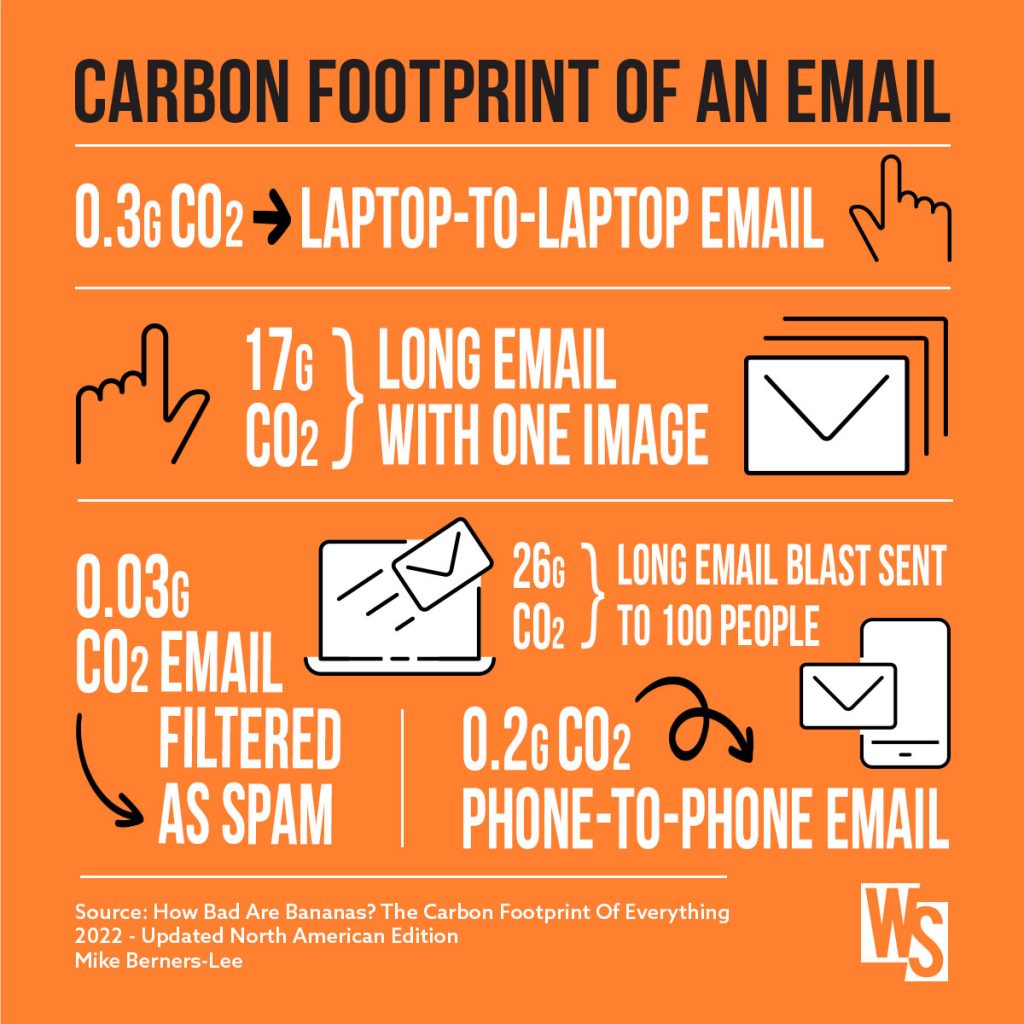The shift from physical to digital is a no-brainer: it’s faster, easier, and cheaper. But we often underestimate the environmental cost of such convenience. How can we ensure digital sustainability and reduce our carbon footprint one decision at a time?
Digital documents are absolutely more convenient than their physical counterparts but not necessarily more sustainable. For many of us, cloud storage is something abstract and ethereal. In fact, it’s built on thousands of square miles of server centers – all of which require resources.
But the carbon footprint of being online extends beyond the data centers. The energy consumption of the devices we use to access the digital world, from smartphones to laptops, contributes significantly to the overall environmental impact.
The sheer volume of online content – from streaming services to social media platforms – applies significant pressure on the digital infrastructure. The energy-intensive data processing required for streaming, coupled with the storage demands of user-generated content, amplifies the environmental impact of our online activities.
➡️ Sending an email from one laptop to another results in 0.3 grams of CO2 emissions.
➡️ The approximate number of internet users in 2023 was 5.4 billion.
➡️ According to various sources, an average smartphone user doesn’t open 60% of their apps.
➡️ Scrolling TikTok for a minute results in 2.63 grams of CO2 emissions, Instagram – 1.05 grams.
➡️ If the internet was a country, it’d be 4th in the world by the amount of carbon emissions.

The devices we use to access the digital world are pivotal in the carbon footprint equation. From manufacturing to disposal, the life cycle of electronic devices involves the extraction of raw materials, energy-intensive production processes, and the generation of electronic waste. And to make things worse, the push for constant upgrades and the rapid turnover of devices further aggravates these environmental concerns.
However, skipping a few model updates for your phone or laptop isn’t enough. We accumulate files, emails, and data with fascinating ease. As a result, unnecessary duplicates and obsolete or forgotten files accumulate in the virtual space, contributing to the overall strain on digital infrastructure and the resources required to maintain it.
The good news is that we have the power to reduce the digital environmental footprint on all levels – from personal to corporate. Here are five ways to make your online presence a little greener, starting today.
The way we operate as professional marketers can also be sustainable. A great example of this is Sustainable Web Design – a practice of designing web services that puts people and the planet first.
Digital sustainability is a crucial part of the conversation at the strategy stage. This means incorporating eco-conscious principles into the planning and execution of marketing campaigns. From the choice of digital platforms to the design of online content, a strategic focus on digital sustainability can contribute to minimizing the carbon footprint of your online presence.
Connect with us to leverage the skills and knowledge Daryna and the rest of the WS team offer for the marketing success of your project.